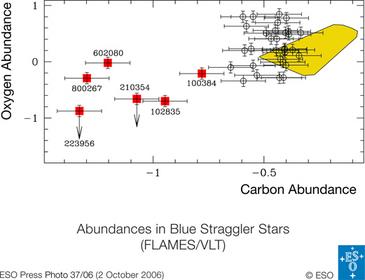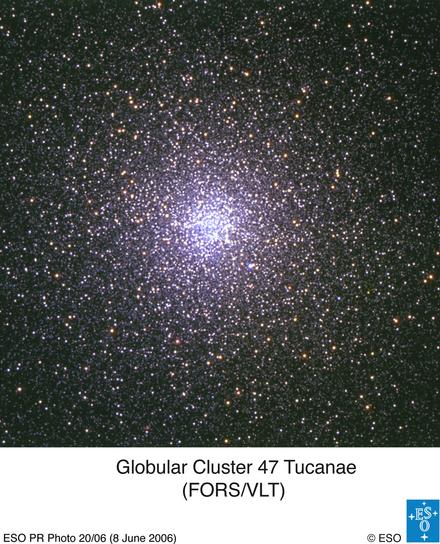The research has been published in a paper appeared in the 10 August 2006 issue of the Astrophysical Journal Letters.
By exploiting the multiplexing capability of the spectrograph FLAMES/Giraffe at 8-m telescope ESO-VLT, the team measured the abundance of chemical elements at the surface of 43 Blue Straggler stars in 47 Tucanae, and discovered that six of them contain less carbon and oxygen than the others. Such anomaly indicates that this material comes from the deep interiors of a companion star and has reached the surface of the Blue Stragglers during the mass transfer process between two stars in a binary system.

Oxygen abundance as a function of Carbon abundance (both with respect to Iron and in a logarithmic scale) for the Blue straggler stars observed in the globular cluster 47 Tuc. Normal Blue straggler stars are marked with empty circles, while the 6 Carbon and Oxygen-deplete Blue Straggler stars are marked with red squares. Their names are also indicated. The yellow region correspond to the location of other stars in 47 Tuc previously studied.

47 Tucanae (or 47 Tuc) is an impressive globular cluster that is visible with the unaided eye from the southern hemisphere. It was discovered in 1751 by the French astronomer Nicolas Louis de Lacaille who catalogued it in his list of southern nebulous objects. Located about 16 000 light years away, it has a total mass of about 1 million times the mass of the Sun and is 120 light years across, making it appear on the sky as big as the full moon.
